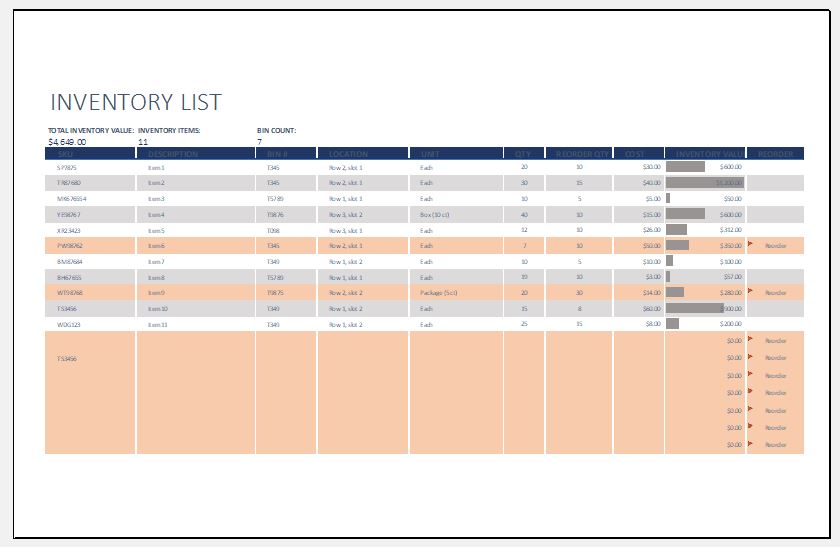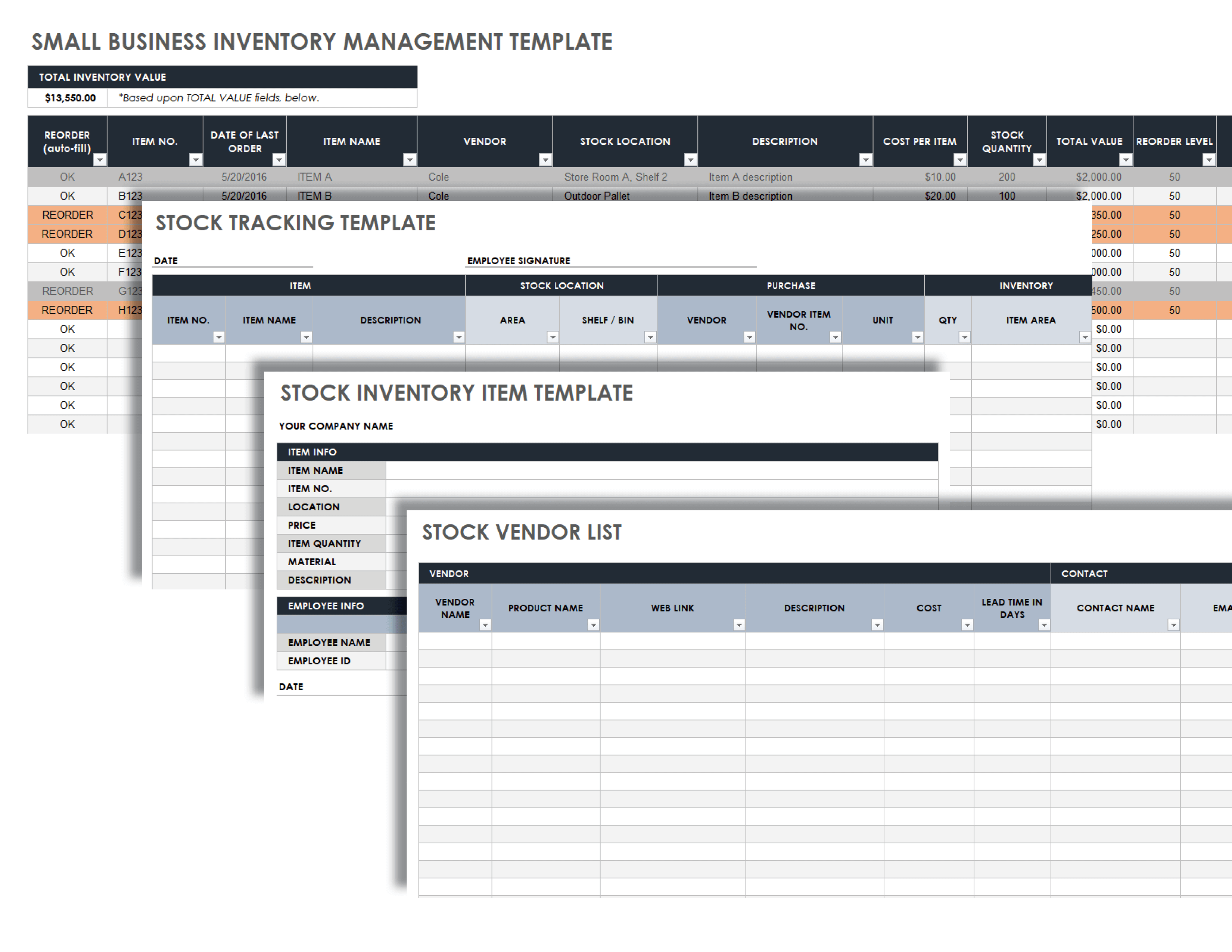Keeping inventory is a critical aspect of running a small business. By effectively managing your stock levels, you can optimize your cash flow, reduce waste, and improve customer satisfaction. This comprehensive guide will provide you with the essential strategies and techniques for keeping inventory for small business, empowering you to make informed decisions and achieve operational excellence.
In this guide, we will explore various inventory management techniques, methods for tracking inventory, and strategies for forecasting demand and replenishment. We will also discuss inventory valuation and costing, inventory optimization, and common inventory management challenges and solutions. Additionally, we will share best practices for inventory management, real-world case studies, and lessons learned to help you implement effective inventory management practices in your small business.
Inventory Management Strategies for Small Businesses: Keeping Inventory For Small Business
Effective inventory management is crucial for small businesses to optimize stock levels, minimize waste, and enhance profitability. Implementing the following strategies can help small businesses streamline their inventory processes and achieve better control over their stock.
One key strategy is to establish a robust inventory management system that provides real-time visibility into stock levels, allowing businesses to make informed decisions about ordering and replenishment. This system should include features such as automated stock tracking, inventory forecasting, and reporting capabilities.
Benefits of Inventory Management Software
- Improved stock accuracy and reduced manual errors
- Optimized stock levels and reduced overstocking or understocking
- Enhanced customer satisfaction through increased product availability
- Reduced waste and spoilage through better inventory tracking
- Improved cash flow and profitability through optimized inventory management
Methods for Tracking Inventory

Efficient inventory tracking is essential for small businesses to maintain accurate records, minimize losses, and optimize stock levels. There are various methods available to track inventory, each with its advantages and limitations.
Manual Systems
Manual inventory tracking involves physically counting and recording stock levels in a notebook, spreadsheet, or inventory management software. This method is cost-effective and suitable for businesses with a limited number of items and low inventory turnover. However, it can be time-consuming and prone to human error.
Automated Systems
Automated inventory tracking systems use technology to track inventory levels in real-time. These systems utilize barcode scanners, RFID tags, or other electronic devices to automatically capture data and update inventory records. Automated systems are more efficient and accurate than manual methods, but they require a significant investment in hardware and software.
Perpetual Systems
Perpetual inventory systems continuously update inventory records as transactions occur. This method provides real-time visibility into inventory levels and allows businesses to make informed decisions about stock replenishment. Perpetual systems are typically used in businesses with high inventory turnover and require a robust inventory management system.
Inventory Tracking Tools, Keeping inventory for small business
- Spreadsheets: Basic spreadsheets can be used for manual inventory tracking, but they can be prone to errors and lack advanced features.
- Inventory Management Software: Dedicated inventory management software offers a range of features, including automated tracking, inventory forecasting, and reporting.
- Barcode Scanners: Barcode scanners allow for quick and accurate data capture, reducing the risk of errors in inventory tracking.
Importance of Accurate Inventory Records
Maintaining accurate inventory records is crucial for several reasons:
- Improved Decision-Making: Accurate inventory data enables businesses to make informed decisions about stock levels, purchasing, and sales.
- Reduced Losses: By tracking inventory levels closely, businesses can minimize losses due to overstocking or understocking.
- Enhanced Customer Satisfaction: Accurate inventory records ensure that businesses can meet customer demand and avoid stockouts.
Forecasting Demand and Replenishment
Forecasting demand and determining optimal reorder points are crucial for efficient inventory management. This process involves anticipating future customer needs and ensuring adequate stock levels while minimizing overstocking.
Techniques for forecasting demand include historical data analysis, market research, and industry trends. Historical data provides insights into past sales patterns, which can be extrapolated to predict future demand. Market research involves gathering information about customer demographics, preferences, and market conditions. Industry trends, such as seasonal fluctuations or economic indicators, can also influence demand forecasts.
Determining Optimal Reorder Points
Once demand is forecasted, businesses need to determine the optimal reorder point. This is the inventory level at which a new order should be placed to avoid stockouts. Factors to consider include lead time, safety stock, and demand variability.
Lead time is the time it takes for a new order to be delivered. Safety stock is an additional inventory buffer to mitigate unexpected demand fluctuations or supply chain disruptions.
Managing Seasonal Fluctuations and Unexpected Changes in Demand
Seasonal fluctuations and unexpected changes in demand can significantly impact inventory levels. Businesses should adjust their forecasting and reorder points accordingly. For seasonal fluctuations, historical data can be used to predict demand patterns and adjust inventory levels in advance.
For unexpected changes in demand, businesses should monitor market conditions and adjust their forecasts as needed. They can also implement flexible ordering policies, such as vendor-managed inventory (VMI), where the supplier manages inventory levels based on demand.
Using Safety Stock to Mitigate Stockouts
Safety stock is an important buffer against stockouts. The optimal safety stock level depends on the criticality of the item, the lead time, and the variability of demand.
By maintaining adequate safety stock, businesses can reduce the risk of stockouts, improve customer satisfaction, and minimize the impact of supply chain disruptions.
Inventory Valuation and Costing

Inventory valuation is the process of determining the value of a company’s inventory. The value of inventory is important for a number of reasons, including financial reporting, tax purposes, and decision-making.
There are a number of different inventory valuation methods that can be used. The most common methods are FIFO (first-in, first-out), LIFO (last-in, first-out), and weighted average cost.
FIFO (First-In, First-Out)
Under FIFO, the cost of goods sold is assumed to be the cost of the oldest inventory on hand. This method is often used when the inventory is perishable or when the prices of goods are rising.
LIFO (Last-In, First-Out)
Under LIFO, the cost of goods sold is assumed to be the cost of the most recent inventory purchased. This method is often used when the prices of goods are falling.
Weighted Average Cost
Under weighted average cost, the cost of goods sold is calculated by taking the average cost of all inventory on hand. This method is often used when the inventory is not perishable and the prices of goods are relatively stable.
The choice of inventory valuation method can have a significant impact on a company’s financial statements. For example, if the prices of goods are rising, FIFO will result in a higher cost of goods sold and a lower net income than LIFO. Conversely, if the prices of goods are falling, LIFO will result in a higher cost of goods sold and a lower net income than FIFO.
Accurate inventory costing is important for a number of reasons. First, it allows companies to track the cost of their inventory and ensure that they are not overpaying for goods. Second, it allows companies to make informed decisions about pricing and production levels. Third, it helps companies to comply with accounting standards and tax regulations.
Inventory Optimization for Small Businesses
Inventory optimization is crucial for small businesses to maximize profits and minimize costs. It involves finding the balance between holding too much inventory, which ties up capital and incurs storage costs, and holding too little, which can lead to stockouts and lost sales.
Inventory turnover ratio is a key metric for measuring inventory efficiency. It shows how many times a business sells its entire inventory over a period of time. A high inventory turnover ratio indicates that the business is managing its inventory effectively and not holding onto excess stock.
Just-in-Time Inventory Management
Just-in-time (JIT) inventory management is a strategy that aims to minimize inventory levels by ordering products only when they are needed. This reduces carrying costs and frees up capital for other business needs. JIT requires close coordination with suppliers and a reliable supply chain.
Last Word
![]()
Effective inventory management is a cornerstone of small business success. By implementing the strategies and techniques Artikeld in this guide, you can gain control over your stock levels, minimize waste, and maximize profitability. Remember, inventory management is an ongoing process that requires continuous improvement and adaptation to changing market conditions. By embracing a proactive approach and leveraging the resources available to you, you can transform your inventory management practices and drive your small business towards sustained growth and profitability.
Frequently Asked Questions
What is the most effective inventory management technique for small businesses?
The most effective inventory management technique for small businesses is the first-in, first-out (FIFO) method, which ensures that the oldest inventory is sold first, preventing spoilage and waste.
How can I optimize my inventory levels to reduce carrying costs?
To optimize inventory levels and reduce carrying costs, consider implementing just-in-time inventory management, which involves maintaining minimal inventory levels and relying on frequent deliveries to meet demand.
What are the common challenges faced by small businesses in inventory management?
Common challenges faced by small businesses in inventory management include inaccurate inventory records, poor supplier relationships, and lack of technology adoption. Addressing these challenges is crucial for effective inventory management.